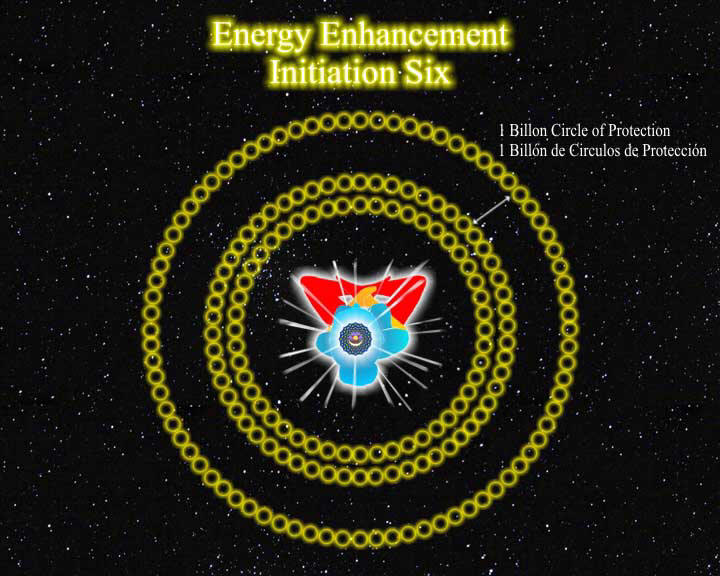PULSES
Page Contents.
- What are pulses?
- Buying and storing.
- How much do you need?
- Types of Pulses.
- Cooking and Serving Pulses.
- Freezing Beans and Lentils.
- Sprouting Beans and Lentils.
WHAT ARE PULSES?
The pulse vegetables consist of a wide variety of beans, peas and lentils. They can be served as first courses, vegetable accompaniments or main courses in their own right.
All pulses are rich in iron and potassium and the B group vitamins, riboflavin and niacin. Most beans contain very little fat, which makes them a valuable inclusion in a low fat diet.
Pulses are a very rich source of vegetable fibre, providing essential roughage needed to keep the digestive system healthy. A healthy diet should also include proteins: everyone needs them to keep up the repair of body tissues and children need them for growth. The average protein content of 1 oz/25 g cooked pulses is 2 g, and chick peas have 6 g and mung beans 7 g.
Pulses are not fattening and in fact they can be a valuable item in a calorie-controlled diet. The average calorie value of all plainly cooked pulses is less than 30 calories per oz/25 g.
Buying and storing.
If you have never tried the many different kinds of pulse before, it is a good idea to buy small amounts of several different kinds at a time and try them all to see which will eventually become your favourites.
The storage life of pulses makes them a very handy store cupboard ingredient, valuable especially to those without a freezer with which to store other protein products such as meat and fish. All pulses will keep for at least a year in good storage conditions, so you can safely buy fairly large amounts at a time. Once opened, store them in a dry place in rigid, airtight containers. After a year they will still be quite edible, but their skin's may toughen and cooking times will have to be longer.
How much do you need?
Beans swell up to about twice their original weight when they are cooked. With a savoury sauce they are very satisfying, so you should find 8 oz/225 g uncooked weight is sufficient to make a main course for 4 people. The kind of proteins contained in pulses are different from those found in meat and fish, and to be effective they need to be combined (at the same meal) with the proteins of grain products. Thus, you should always try to serve pulses with rice, bread, toast, pastry, pasta or other grains to get the maximum nutritional benefit from them. Lentils, especially whole ones, do not swell up quite so much and you may find that you will need 12 oz/350 g for 4 people. Proportionately less of each is needed for a first course or accompaniment to a main course. The best way is to try the amounts suggested and vary them according to how much your family eats.
Types of Pulses.
Beans.
|
Name. |
Appearance and Taste. |
Cooking and Serving Suggestions. |
|
Baked Beans. |
Cooked haricot beans canned in tomato sauce. |
|
|
Red Kidney Beans. |
1-2 cm long, kidney shaped, dark red and glossy. Firm texture when cooked and savoury flavour. Also available canned. |
In casseroles and stews. |
|
Butter Beans (called Lime Beans in America). |
2-2.5 cm long. Large, flat, kidney-shaped, cream coloured. Soft, floury texture, and robust, savoury flavour. |
In casseroles and stews. |
|
Canned Butter Beans. |
|
Ready cooked - simply reheat, no need to boil. |
|
Haricot Beans (called Navy Beans in North America). |
1cm long. Very slightly kidney-shaped, white or cream-coloured. Delicate flavour. |
|
|
Cannellini Beans. |
1.5cm long. Kidney shaped (are a variety of kidney bean) and white or cream-coloured. Firm in texture, even when completely cooked, and good savoury flavour. |
|
|
Black-eyed Beans (also called black-eyed peas). |
1 cm long. Small, kidney-shaped and cream-coloured, with a black 'eye' at the sprouting point. Musty, savoury flavour. |
|
|
Chick-peas (also called garbanzos). |
1 cm long. Round, with a point at one-end, and a deep creamy colour. Nutty flavour. Also available canned. |
|
|
Mung Beans. |
5 mm long. Round to oval in shape. Moss green in colour. Has a fresh flavour and a slightly creamy texture when cooked. |
|
|
Borlotti Beans. |
1 cm long. Kidney-shaped. Pink or grey with red markings. Slightly bittersweet flavour. Also available canned. |
|
|
|
|
|
Many other kinds of bean are available and are worth trying, including Aduki beans, broad beans, field beans, flageolets, brown, white and black kidney beans, and pinto beans.
Lentils and Peas.
|
Name. |
Appearance and Taste. |
Cooking and Serving Suggestions. |
|
Split Red Lentils |
3mm across. Flat on one side, rounded on the other. Bright orange, turning a dull yellow when cooked. Distinctive savoury flavour. |
|
|
Green Lentils (sometimes called Egyptian lentils). |
8mm across. Elliptical in shape and dull green in colour. Fresh, spicy flavour. |
|
|
Brown Lentils (sometimes called Chinese lentils). |
3mm across. Elliptical in shape. Dark, dull brown in colour with a rich flavour. |
|
|
Whole Peas (also called marrow fat peas). |
5mm across. Round and wrinkled, dull green colour. Floury texture and floury pea flavour when cooked. |
|
|
Split Yellow Peas (split green peas are also found). |
5mm. Flat one side, rounded the other. Bright yellow in colour. Rich pea flavour, slightly musty. |
|
|
|
|
|
Cooking and Serving Pulses.
Soaking.
Beans.
All dried beans are very hard and generally need to be soaked overnight in cold water before they are cooked.
Lentils and Pulses.
It is necessary to soak lentils for about 5 hours. Whole or split dried peas should be soaked in the same way as beans. Never eat dried peas raw.
Cooking Beans.
It is very important to soak beans for at least 8 hours and then ensure as some stage during the cooking process that they boil for at least 10 minutes. This is to destroy substances in the beans that can cause sickness if left untreated. Although some beans do not contain these substances, it is better to get into the habit of doing it for all beans. Canned beans, of course, are precooked and need no such treatment.
Stove-top cooking.
Soak the beans first for the required amount of time. Bring them to the boil and boil for 10-15 minutes. Drain and return them to the saucepan with four times their volume of water. Add 1 tablespoon / 15ml spoon cooking oil to stop them foaming and to improve their texture. Bring to the boil and then lower the heat. Cover and cook gently.
Try the beans after the recommended time and if they are not completely tender carry on cooking for a little longer. Beans can very from batch to batch. Never worry about over-cooking. Over-cooked beans are far more pleasant to eat then under-cooked.
When you are cooking beans plainly you can add a little salt, but some seasonings and flavourings will toughen the skins. This does not apply when beans are being cooked in a mixed casserole-type dish, for then it is better that they are allowed to pick up the flavours of the other ingredients. Never add soda to the cooking water, as this destroys the vitamins.
Cooking in the Oven.
This can be an economical way of cooking beans if you have a solid fuel or oil-fired oven, or if you have the oven on already. Soak the beans, bring them to the boil, boil for 15 minutes and drain. Put them in a flameproof casserole, cover with water and add 1 tablespoon / 15ml spoon oil. Bring them to the boil, cover and put them in the oven, 350 F / 180 C / Gas Mark 4, for the recommended time.
Cooking in a Pressure Cooker.
A pressure cooker - made of steel, not aluminum - will cut down on the cooking time for beans enormously. If you like beans and intend to use them frequently in your cooking, it would be well worth your while investing in one. To cook beans in a pressure cooker, soak them first and drain them. Put in the pressure cooker with three times their volume of water and 1 tablespoon / 15ml spoon oil. Never fill the pressure cooker more than two-thirds full. Bring the beans to the boil and boil them for 15 minutes. Put on the lid, bring the cooker up to pressure and then cook for the recommended time.
Cooking in a Slow Cooker.
Before cooking beans in a slow cooker, it is essential to soak and boil them first. After soaking overnight in plenty of cold water, rinse and put them in a saucepan of water. Bring to the boil and boil for 10 minutes. Drain, put in the cooker, cover with water and add 1 tablespoon / 15ml spoon oil. Cover the pan and either turn to the higher temperature for a shorter time, or cook them on the higher temperature for 20 minutes and then on the lower for the remainder of the time. An automatic setting on the cooker will do this for you.
Cooking in a Microwave Oven.
Beans need the same length of cooking time in a microwave oven as they do on the stove. This is therefore not a very economical way of initial cooking. However, a microwave oven can be very useful for reheating cooked beans or thawing frozen ones. Allow 3 minutes at the highest temperature for reheating, 10 minutes for thawing and heating.
Cooking Lentils and Peas.
Whole Lentils.
To cook whole lentils, soak for 5 hours, cover them with water, boil for 10 minutes and then simmer: split red lentils for 15 - 20 minutes; green lentils for 45 minutes - 1 hour; brown lentils for 1 hour. A bay leaf or bouquet garni will improve their flavour. You can also season lentils from the beginning of the cooking time.
To cook whole lentils in a pressure cooker, put them in the cooker with three times their volume of liquid. Season, add a bay leaf and bring them to the boil. Put on the lid, bring them up to pressure and cook for 15 minutes.
To cook in a slow cooker, first bring the lentils to the boil in water. Put them in the cooker with the water, add a bay leaf and seasonings and cook for 3 hours at the higher temperature or 9 hours at the lower.
Whole lentils can be finished off and served in the same way as beans.
Whole Peas.
Soak the peas overnight in plenty of cold water. Rinse thoroughly and place in a pan of fresh, salted water. Bring to the boil, cover the pan and boil rapidly for 10 minutes. Simmer for a further 1.5 hours until tender. If using an oven instead, cook for 2 hours or for 20 minutes in a pressure cooker. In a slow cooker they need 4 hours at the higher temperature, 10 hours at the lower.
Split Lentils and Split Peas.
Split peas and lentils are best cooked to a puree with a measured amount of liquid. Use 1 pint / 600ml water or stock to 8 oz / 225g lentils or peas. Season well, add a bay leaf, bring to the boil and simmer lentils for 15-20 minutes, split peas for 45-50 minutes. Beat them with a wooden spoon towards the end of the cooking time, to blend together and to prevent sticking.
Lentil and pea purees can be flavoured with softened onions, herbs, and spices and served either as an accompanying dish (such as pease pudding or the Indian dahl) or as the main dish. To make them more interesting they can into patties or croquettes and shallow fried. Lentil puree can also be used to make a vegetarian roast if it is mixed with wholemeal breadcrumbs, chopped nuts, and flavourings and baked in a tin or mould in the oven.
To make lentil salad, beat a well-flavoured vinaigrette dressing into the puree and add small amounts of chopped ingredients, such as green peppers, onions, celery, and apples. Serve the salad with an accompanying green salad.
Split lentils and split peas all make thick, nourishing soups that can be served with a salad and bread as a main meal.
Freezing Beans and Lentils.
All cooked dishes of pulses can be frozen. Pack them into plastic containers and cover before freezing. Freeze croquettes separately and then put into polythene bags. They will keep for up to 3 months.
Sprouting Beans and Lentils.
When you have beans and whole lentils you do not need a garden in order to grow your own salad vegetables. Many of them can be successfully sprouted in jam jars.
For sprouting, use 1 lb/450g jam jars for lentils and 2 lb/900 jars for beans.
- Put 2 tablespoons / 2 x 15ml spoon lentils or 4 tablespoons / 4 x 15ml spoon beans in the bottom of the jar.
- Cover the jar with muslin and anchor the muslin down with an elastic band.
- Pour warm water into the jar, rinse it round and throw it away.
- Cover the lentils or beans with more warm water and leave them to soak for 24 hours.
- Pour away the water. Rinse the beans or lentils again and drain them.
- Put the jar on its side in a flat dish and put the dish in a brown paper bag.
- Leave the dish in a warm place, rinsing and draining the beans every morning and evening. In 5-6 days you will have ajar full of delicious, crispy sprouts that you can use in salad, soups and stir-fried dishes.
|
ENERGY ENHANCEMENT TESTIMONIALS EE LEVEL1 EE LEVEL2 EE LEVEL3 EE LEVEL4 EE FAQS |




